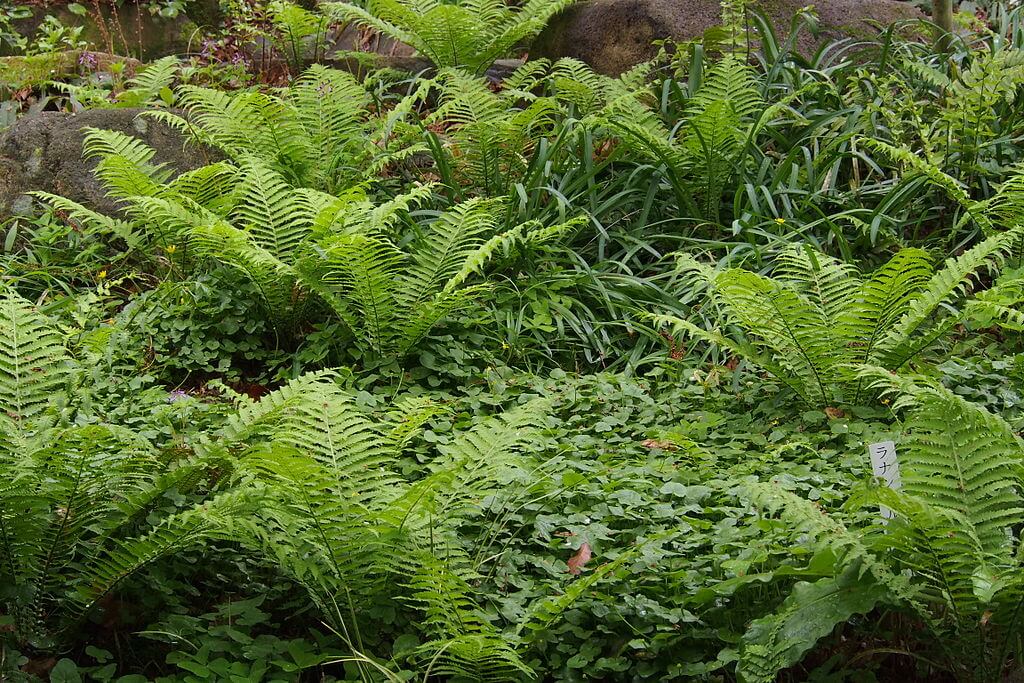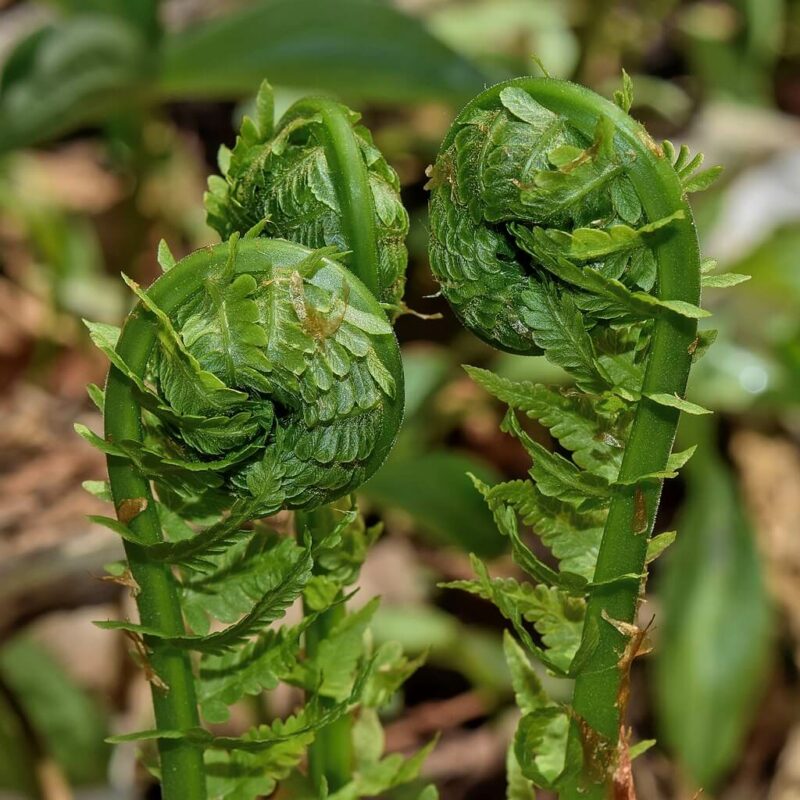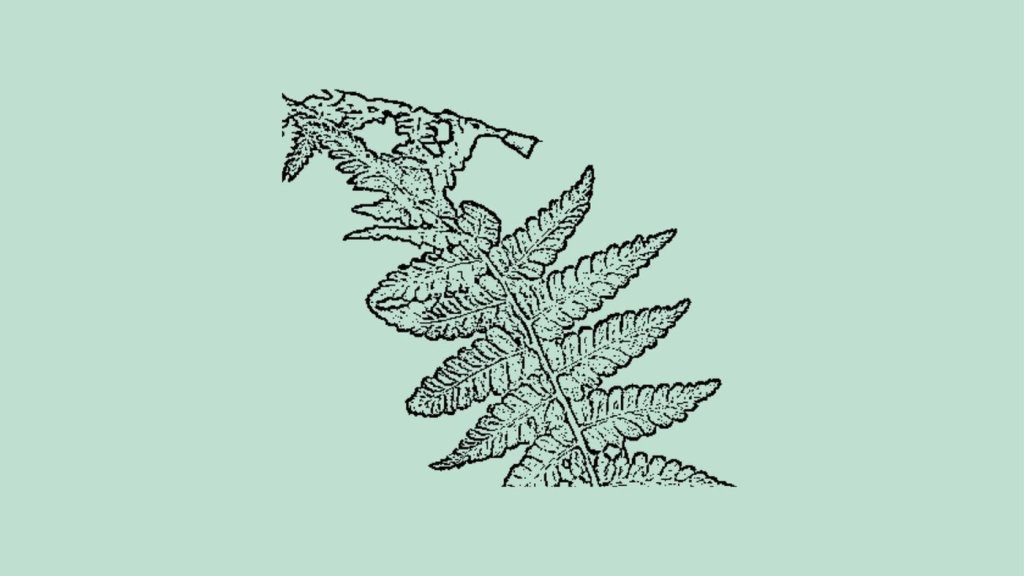Ostrich fern, scientific name Matteuccia struthiopteris, is a native plant to North America and a member of the Onocleaceae family. It is known for its distinct beauty and the edibility of its fiddleheads.
Ostrich ferns are sometimes referred to as Fiddlehead ferns. This name isn’t entirely appropriate as the new growth on all ferns arise as fiddleheads. The term fiddlehead refers to the tightly curled shape of new fronds on ferns as they emerge.
It is a deciduous fern meaning that rather than staying green year around (evergreen), it will die back and return in the early spring.
The delicate and showy, fronds resemble ostrich feathers and are responsible for its common name, Ostrich fern.
What Are You Foraging For Right Now?
We're thrilled to hear your ideas. What would you like to submit today? Feel free to share your thoughts and experiences with us.
Where do Ostrich Ferns grow?
Ostrich Ferns are native to temperate regions of the Northern Hemisphere, and they can be found growing in various habitats across North America. These ferns are well-adapted to damp, shady environments and are often associated with woodlands, stream banks, and other moist areas.
The Ostrich fern grows best in USDA hardiness zones 3-7 which encompasses areas of the north and southeastern United States.
Because they are shade loving and require generous amounts of water, ostrich ferns are not readily found in areas prone to drought.

How big do ostrich ferns get?
The fronds of Ostrich ferns can grow to heights of 3 to 6 feet (0.9 to 1.8 meters) on average. In some cases, they may even reach up to 7 feet (2.1 meters) or more under optimal conditions.
What are the colors of ostrich ferns?
The primary color of Ostrich Fern fronds is green. strich Ferns are deciduous, which means they lose their leaves in the fall. As the growing season comes to an end, the fronds will gradually turn brown and die back. This is a natural part of the fern’s life cycle.
how to identify ostrich ferns?
Their unique fronds resembling ostrich plumes are the primary attribute that makes identifying ostrich ferns a fairly easy task.
Also, look for the features:
- Smooth green stems with deep vase-shaped gutter in the middle.
- Erect fronds grow from the middle of the plant with spores on the back. These are referred to as fertile fronds. These will remain present on the plant all year long even as the outside leaves die back.
- Not all of fronds on the Ostrich fern plants will have spores though. The largest green leaves growing on the outside of the plant have no spores and are referred to as sterile fronds.
- The fiddleheads have a papery sheath covering them as they emerge in spring.


Is ostrich Fern edible?
Yes, Ostrich ferns are known for producing edible fiddleheads, which are the tightly coiled, young fronds that emerge in the spring. Fiddleheads are considered a seasonal delicacy
Additional information on foraging and harvesting Ostrich fern can be found in this article from the University Of Maine.
If you’re interested in more edible plants you can forage in your area, check out my guides on:
How to cook with ostrich fern (any recipes?)
Ostrich fern fiddleheads can add a unique and delicious touch to various recipes. Their tender texture and slightly nutty flavor make them a versatile ingredient in both savory and even some sweet dishes.
Here are a few ideas on how to use ostrich fern fiddleheads in recipes:
- Sauteed Side Dish:
- Blanch the fiddleheads and then sauté them in butter or olive oil with garlic, shallots, or onions.
- Season with salt, pepper, and a splash of lemon juice for a simple and flavorful side dish.
- Pasta Dishes:
- Add blanched fiddleheads to pasta dishes like creamy pasta sauces, carbonara, or stir-fries for an interesting texture and taste.
- Fiddlehead Salad:
- Use blanched and cooled fiddleheads as an ingredient in salads. Combine them with fresh greens, vegetables, nuts, cheese, and your favorite dressing.
- Omelets and Quiches:
- Incorporate sautéed fiddleheads into omelets, quiches, or frittatas along with other vegetables and cheeses.
- Pizza Topping:
- Add sautéed fiddleheads as a unique topping for homemade pizzas. Combine them with other vegetables, cheeses, and your preferred sauce.
- Spring Rolls or Wraps:
- Use blanched fiddleheads as a filling for spring rolls or wraps, along with other fresh vegetables, protein, and dipping sauce.
- Soup or Stew Ingredient:
- Add fiddleheads to soups, stews, or chowders for added nutrition and a delightful crunch.
- Fiddlehead Garnish:
- Use blanched fiddleheads as a decorative garnish for various dishes, such as meat or fish entrees, to add visual appeal.
- Fiddlehead Pickles:
- Prepare pickled fiddleheads by blanching them briefly and then pickling them in vinegar, water, and seasonings. They make a unique and tangy condiment.

Where should you plant ostrich ferns?
Ostrich ferns are generally hardy in USDA zones 3 to 7 climates. If you live in a region with colder winters, ensure that the ferns are well-established and properly mulched before the cold season.
- Ostrich ferns prefer full-shade or partially-shaded locations. They are well-suited for shade gardens that receive filtered sunlight or only a few hours of direct sunlight per day.
- Choose a location with consistently moist soil.
- If you have a stream or water feature on your property, consider planting Ostrich ferns along the banks.
- Ostrich ferns can be suitable for rain gardens or areas that experience periodic flooding.
- If you’re limited on space or have a small garden, you can plant Ostrich ferns in containers filled with moist potting mix.
- Because of their eventual size, they can make a perfect backdrop for Hostas or Astilbes, both of which enjoy similar growing environments.
Do ostrich ferns need full sun?
No, Ostrich ferns do not require full sun and, in fact, they prefer shaded to partially shaded environments.
Are ostrich ferns invasive?
While Ostrich ferns are not typically considered highly invasive, their potential to naturalize and form dense colonies should be taken into account when planting them
What is the easiest way to remove ostrich ferns?
Choose the Right Time:
The best time to remove Ostrich ferns is during their dormant period, typically in the late fall after the fronds have turned brown and died back for the season. This is when the ferns are less actively growing.
Prepare Tools:
You’ll need a shovel or spade to dig up the ferns and their rhizomes. A trowel might also be helpful for smaller plants.
Cut Back Fronds:
Before digging, cut back any remaining fronds close to the ground. This makes the digging process easier and prevents damage to the fronds.
Dig Carefully:
Begin digging around the base of the ferns, working to loosen the soil. Ostrich ferns have rhizomes that spread horizontally beneath the soil surface, so dig a bit wider than the visible plant to ensure you get most of the underground rhizomes.
You can also check my guide on lemon button ferns.
Lorin is a writer, photographer and nature enthusiast in Sacramento, CA. In addition to gardening, she makes a regular practice of forging for edible plants and flowers. Nature nourishes if you know where to look.

